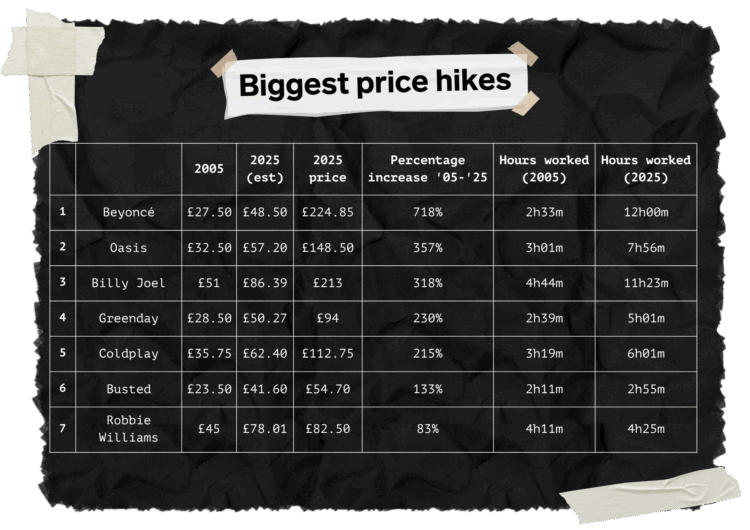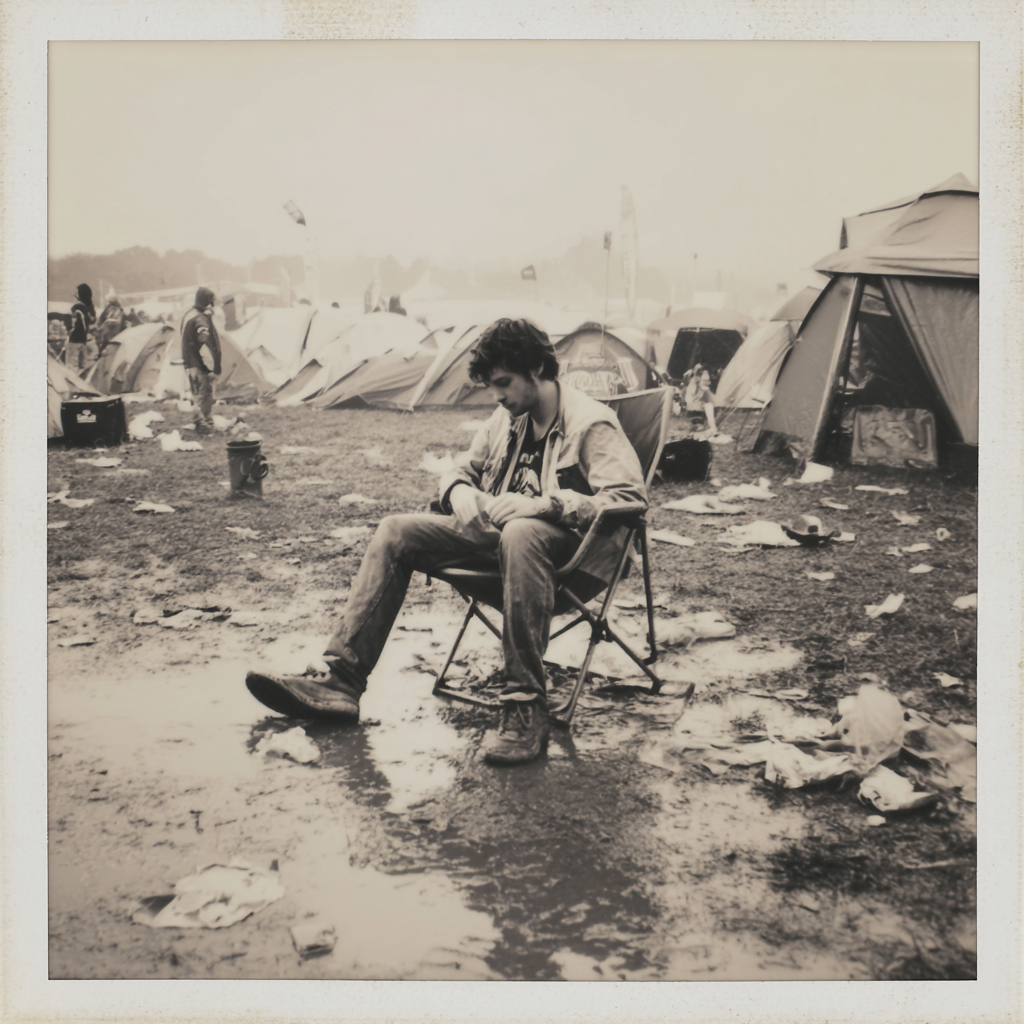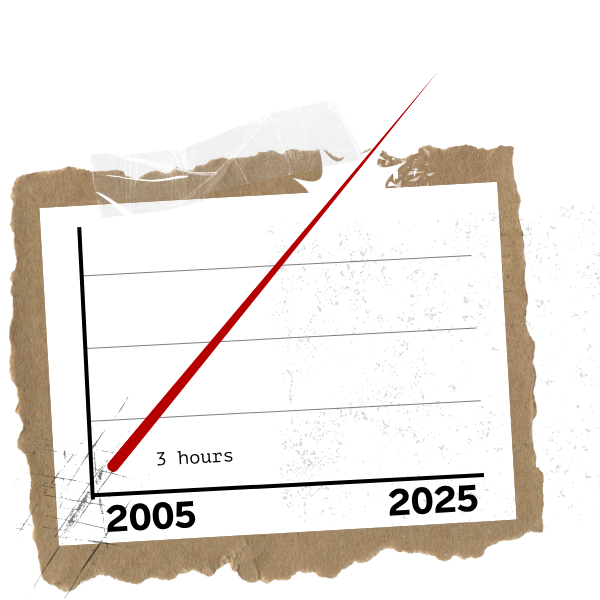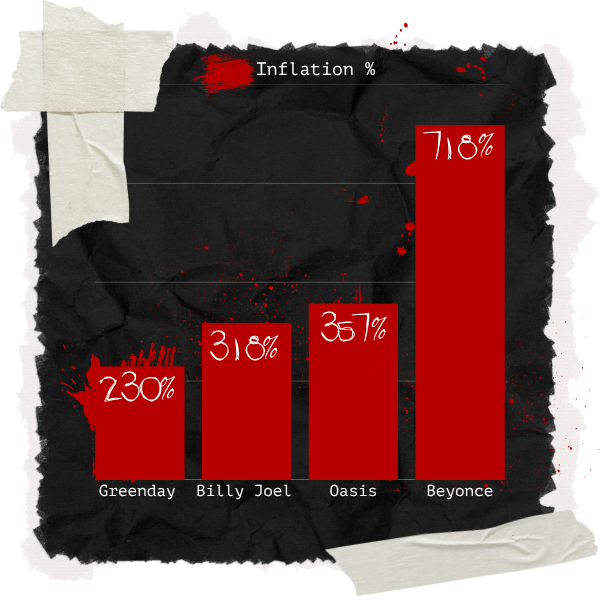


Digital Audit
There is no room for mediocrity in the future. We will forensically retire your incumbent agency.
Piece by ickle piece individually wrapped in powerpoint slides.



Do we earn enough to rock ‘n’ roll?
The rise in gig prices over 20 years
Ticket prices have rocketed so far beyond inflation, you’d be forgiven for thinking they were set by a time traveller with a grudge. Music lovers have long felt the slow, painful squeeze of rising gig prices, like watching your bank account bleed out, one ticket at a time. And some gigs are now charging prices that inflation wouldn’t expect until 2081. Assuming we’re not trading in bottle caps by then.
So we asked ourselves…whose ticket costs have increased the most in the last 20 years? We then ran the numbers to see which musicians are demanding a bigger slice of our wage packet compared to ‘05…
Oasis, Manchester’s favourite bickering brothers, have reunited after 15 years of sulking, and their comeback shows are officially the hottest (and one of the most financially ruinous) tickets in town. Standing will set you back around £150, while premium packages go for half a grand, presumably with a commemorative punch-up included.
Not to mention, the band single-handedly caused a nationwide kick-off about the act of surge pricing.
In 2005, a ticket to see Oasis possibly make it through their set cost £32.50, meaning prices (for a standing view) have risen by a huge 357%. A price that inflation wouldn’t reach until the year 2054.
Accounting for inflation alone, an Oasis ticket should cost around £57.20, according to the Bank of England’s inflation calculator. In reality, that might just get you a bucket hat for the occasion.
This trend isn’t unique to Oasis. The Dark Horse Gig Report 2025 examined a sample of artists who’ve been touring consistently over the past 20 years, and found only one other act asking fans to make the same kind of wallet-thinning sacrifice.
In 2005, Destiny’s Child released their greatest hits album and a ticket to see them cost £27.50–the equivalent of a little over two and a half hours’ work. How things have changed! In 2025, Beyoncé has released nine solo albums, and to see her Cowboy Carter tour, it costs 12 hours queueing and 12 hours of work, with tickets costing a wild £224.85 (for standing).
It seems that no matter the genre, every band is now asking more from their fans, emotionally, spiritually, and especially financially. Take Coldplay: ticket prices have soared from £35.75 to £112.75 over the past two decades–an increase of 215%. What once cost just over three hours of work now demands a full six hours, nearly an entire shift, just to hear Yellow under a shower of eco-friendly confetti.
Billy Joel, the piano man, was already priced at four hours and 44 minutes’ worth of work (£51) in 2005. If inflation were to do the heavy lifting, those tickets would now cost £86.39… a far cry from the £213 they actually cost, which clocks in at 11 hours and 23 minutes oft work.
Was it the years of public meltdowns and passive-aggressive interviews that justified the price hike, or are we simply paying a premium for raw, unfiltered Mancunian talent? Either way, two things are certain: whatever’s driving ticket prices into the stratosphere, it hasn’t trickled down to wages… and the Oasis PR team has been playing the long game.
In 2005, the median hourly wage of an adult working full-time was £10.77, meaning just over three hours of work would afford someone the pleasure of seeing Oasis throw instruments at each other. Two decades on, the median hourly wage is £18.72, which may seem like a lot, but even with time valued that high, it will still take a mindboggling seven hours and 56 minutes to work back a standing spot at the Oasis reunion show.
Are they humble… or just realistic about their going rate?
A select few artists who’ve been entertaining the masses for the past two decades seem to understand what their fans can afford, or perhaps what they’re still willing to cough up for a night of nostalgia.
But who are these rare, grounded musical unicorns?
Busted, one of the biggest boy bands of the early 2000s, has come back in full force to reap the rewards of the Y2K trend and the need for nostalgia. Back in 2005, Busted was breaking hearts by breaking up, and the last tour they did cost £23.50 a ticket (two hours and 11 minutes of work). This price, inflated for the 2025 market, would be £41.60.
If Oasis has taught us anything, it’s that the reunion tax is real and it’s weighty. Busted’s 2025 tickets cost £54.70. Hardly the £91.30 reunion tax you’ll find on an Oasis ticket. Busted tickets have increased, overall, by 133% since 2005, but that’s still less than three hours at work.
In 2005, Robbie Williams (previously of Take That fame) was releasing a number one album, Intensive Care. A decade into his solo career, a ticket to see Robbie cost £45, about four hours and 11 minutes of work. In 2025, Robbie released his 13th solo album and is charging a very reasonable £82.50. He’s overshot inflation by a humble fiver, asking his fangirls to work just four hours and 25 minutes. A bargain, by today’s brutal standards, and possibly the best deal you’ll get from a man in sequins this year.

AJ Sutherland, a Production Manager for artists including Tate McRae and Mura Masa, commented on the data:
“The obvious starting place is the so-called ‘decline of the record industry’, which can also be seen as the rise of streaming.
“Whether you consider this good or bad, it certainly has driven the increase in live shows and festivals. Bands have to lean into live performances to support their careers, and stay visible and relevant among the TikTok generation.”
According to AJ, the move away from club shows to arena tours has also significantly impacted ticket pricing. He says:
“Back in 2005, an act might play 20 club shows in towns throughout the UK over a month-long tour. Now, they’re more likely to play to the same number of fans, but they can do it in a week in just four or so major market arenas (likely London, Birmingham, Manchester and Glasgow).
“50,000 tickets at arena prices is much more revenue than 50,000 tickets at club prices. There are also some cost efficiencies to a one-week tour: fewer wages to pay, equipment rental, travel expenses and accommodation.”
While Sutherland’s insights provide much-needed industry context, the overall picture is stark. For fans, the rising cost of live music is prompting difficult decisions about how often, and how far, they can afford to attend gigs.
It also begs the question: how do these changes in the gig economy affect those artists who aren’t big enough to benefit from the financial efficiency of an arena tour?
“A sad side effect of these stacked trends is that grassroots venues are closing while more arenas are opening, and the biggest artists in the world are breaking records with their profits while upcoming and less mainstream bands struggle to keep going,” Sutherland says.
While the industry is demanding live music performances more than ever before for artists to stay relevant in the age of social media, independent artists and venues are struggling to keep the doors open and the tour bus on the road.
The data alone should give gig-goers a moment’s pause, perhaps even a guilty one, and maybe nudge them toward skipping one more overpriced arena tour in favour of finally showing up for the underdog in their playlist.
The Dark Horse Gig Report 2025 raises some pressing questions about the future of live music accessibility in the UK. With ticket prices climbing faster than wages or inflation, the gig experience, once a reliable break from the mundanity of everyday life, risks becoming a distant luxury. For many, it probably already has.
Ticket prices from 2005 were sourced through a combination of publicly available online forums, archived listings, and secondary market platforms such as eBay, where original ticket stubs are resold and often include pricing information. For 2025 ticket prices, current listings were gathered from official vendor sites and promoter announcements.
To assess real-term price changes, 2005 ticket prices were adjusted for inflation using the UK Consumer Price Index (CPI), accessed via the Office for National Statistics (ONS). This provided a baseline for what 2005 prices should cost in 2025, had they only increased in line with inflation.
The actual percentage increase in ticket prices was calculated by comparing the original 2005 ticket price with the 2025 price, using the formula:
Percentage Increase = ((2025 Price – 2005 Price) / 2005 Price) × 100
To assess affordability over time, average hourly wage data for both years were sourced from ONS figures. We then calculated the number of hours of work required to afford a single ticket in each respective year, providing a comparison of ticket cost relative to income.
Some data from 20 years ago proved elusive, thanks to the internet’s habit of remembering everything except what you want it to. While every effort has been made to ensure the figures are carefully qualified and accurately processed, we can’t promise this report is 100% flawless… but hey, neither is live music.
All raw data and analysis for reference can be found here.


There is no room for mediocrity in the future. We will forensically retire your incumbent agency.
Piece by ickle piece individually wrapped in powerpoint slides.


They haven’t got mortgages so why not take their savings instead of Netflix. Paid Social so startlingly revolutionary that it could make Gen Z vote Tory with Kirsty Allsop as PM.
Learn More

The only thing you will get from page 3 is going blind.
Law professional, Tracey 23, from Skegness says "No sales below my favourite position - number 1 of course!"


PPC results to make you cry tears of joy.
PPC results to make your competition cry. Period. Make a Martini out of them.
Get in touch with us
There is no faith we betray. You ask us to bring wealth to you and destruction to your competition. Dark Horse accepts.










